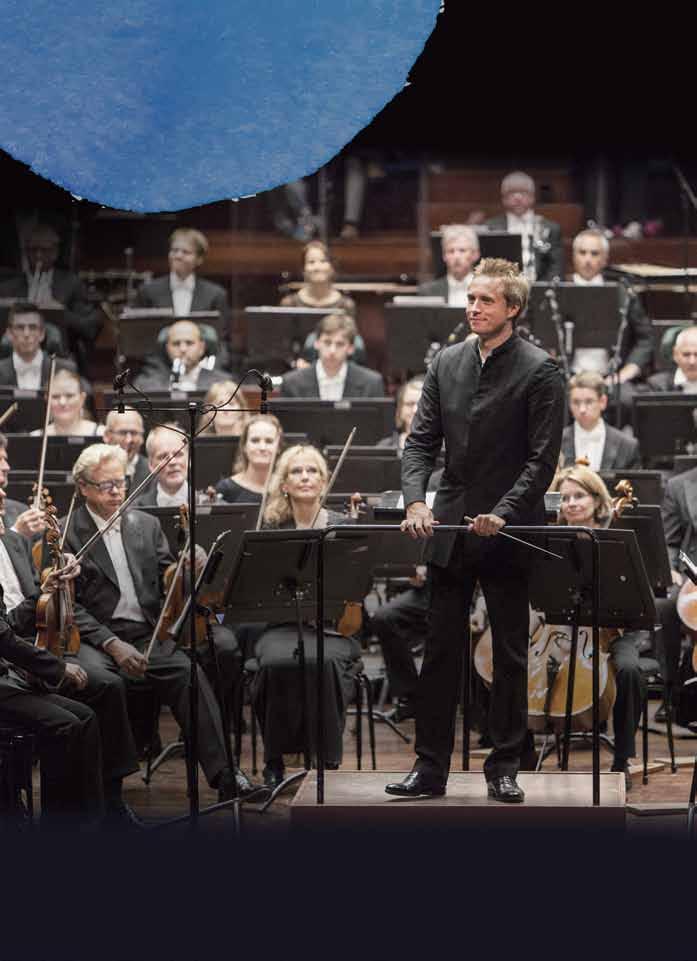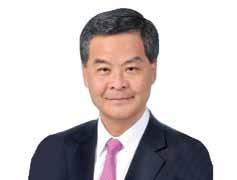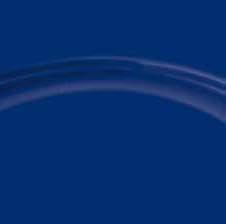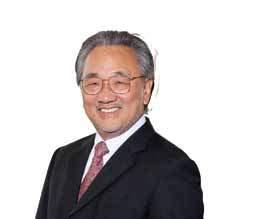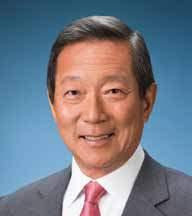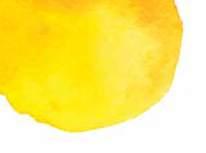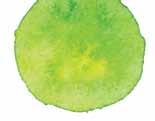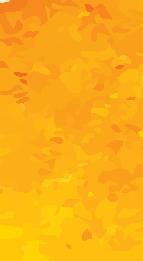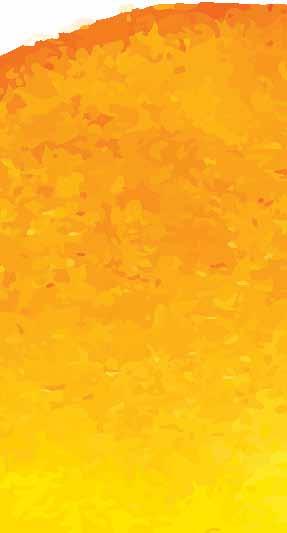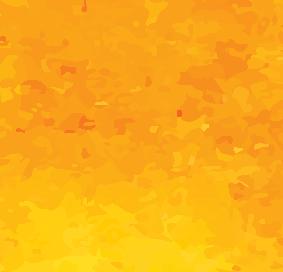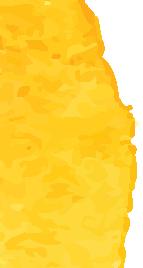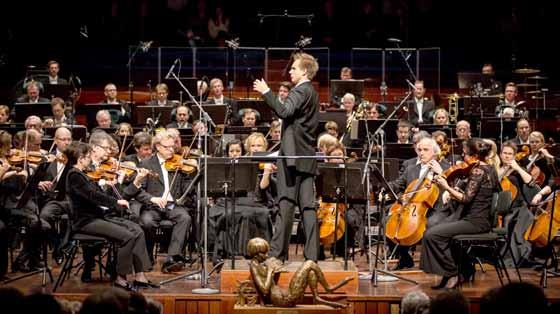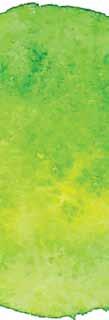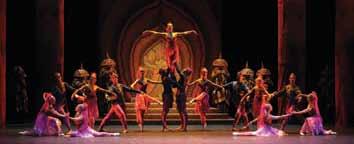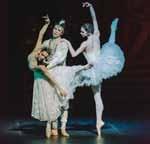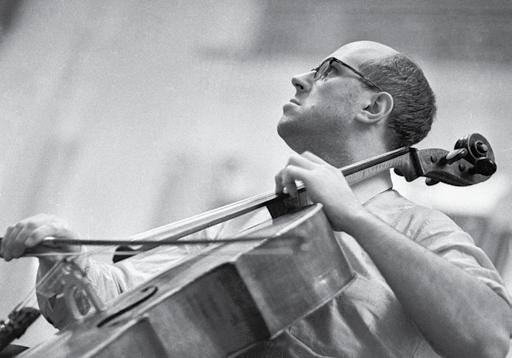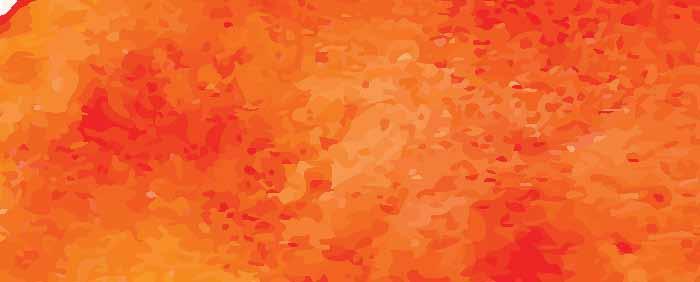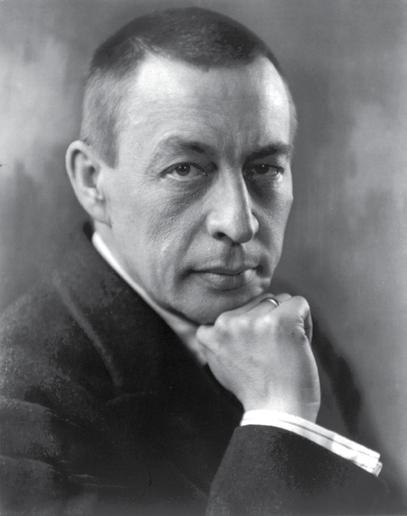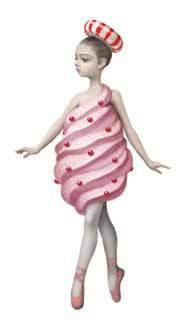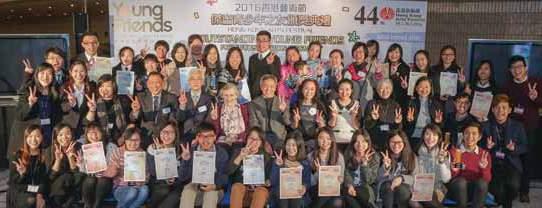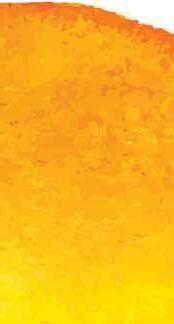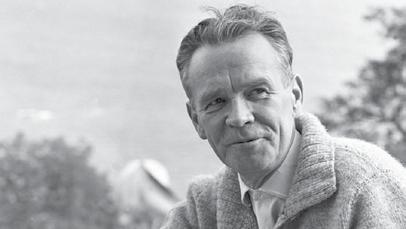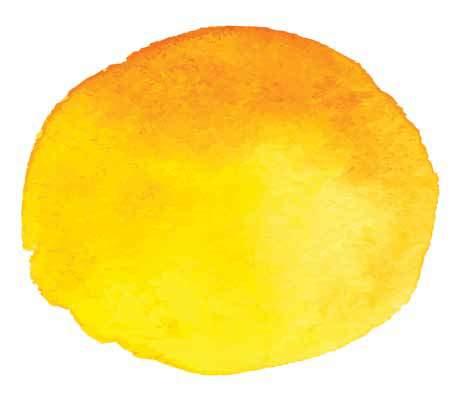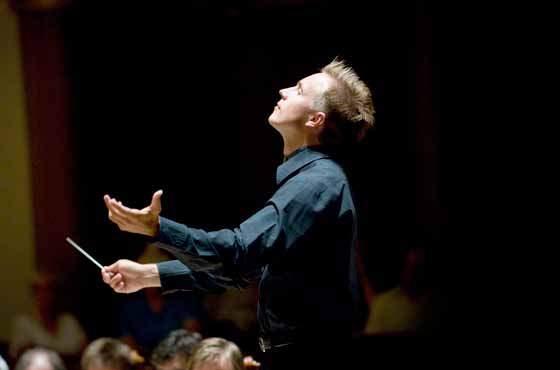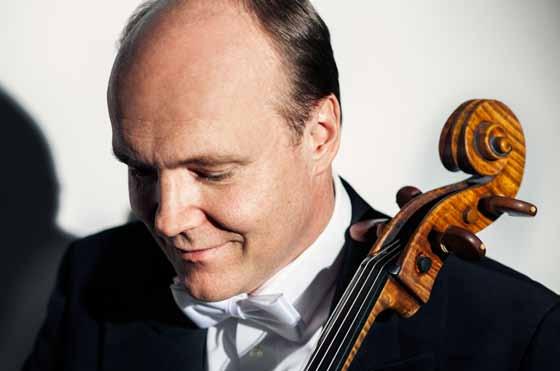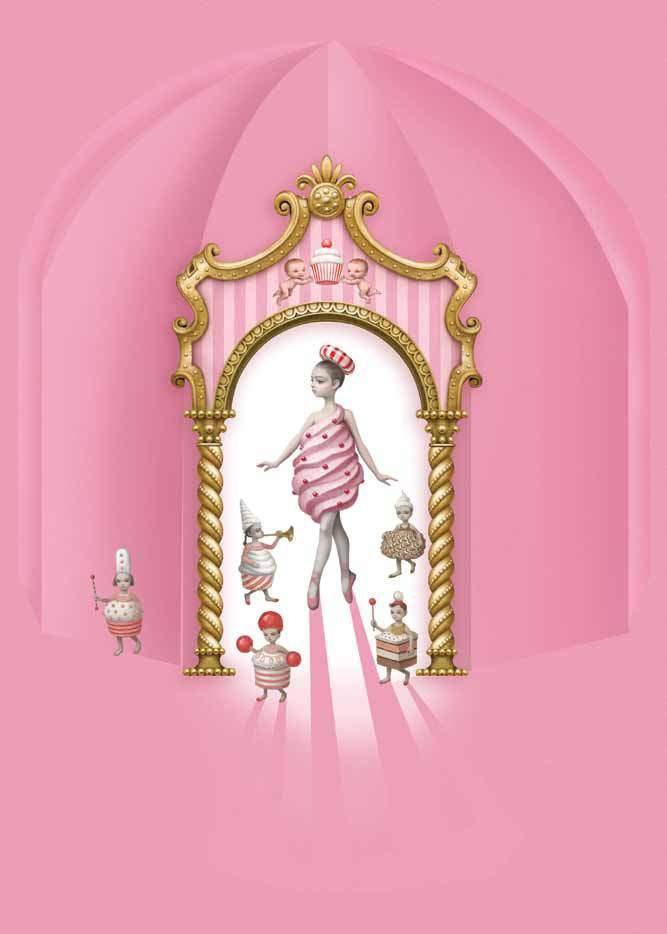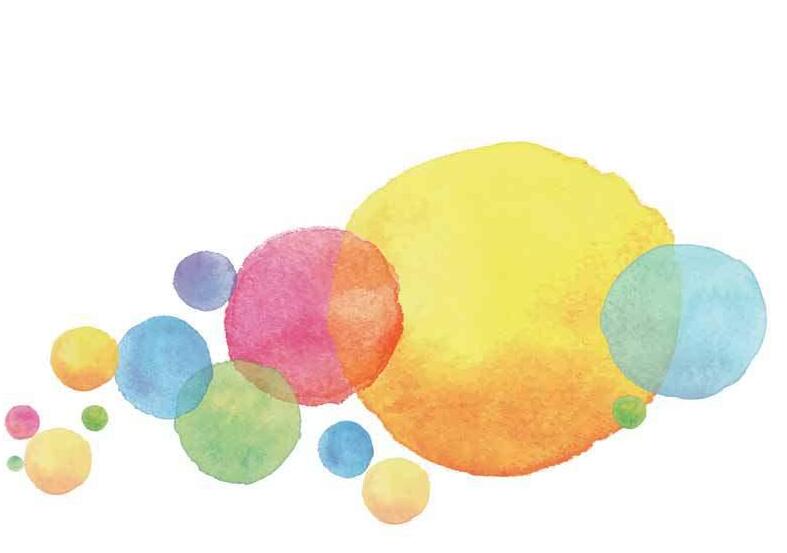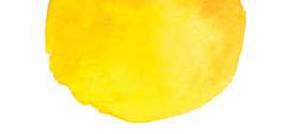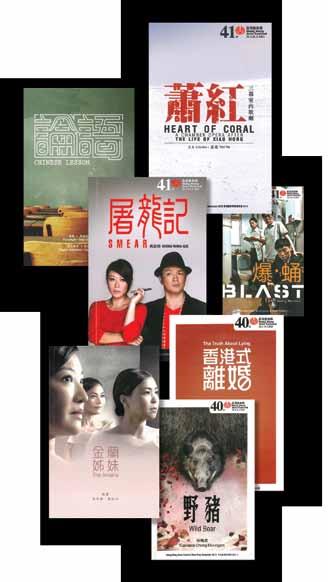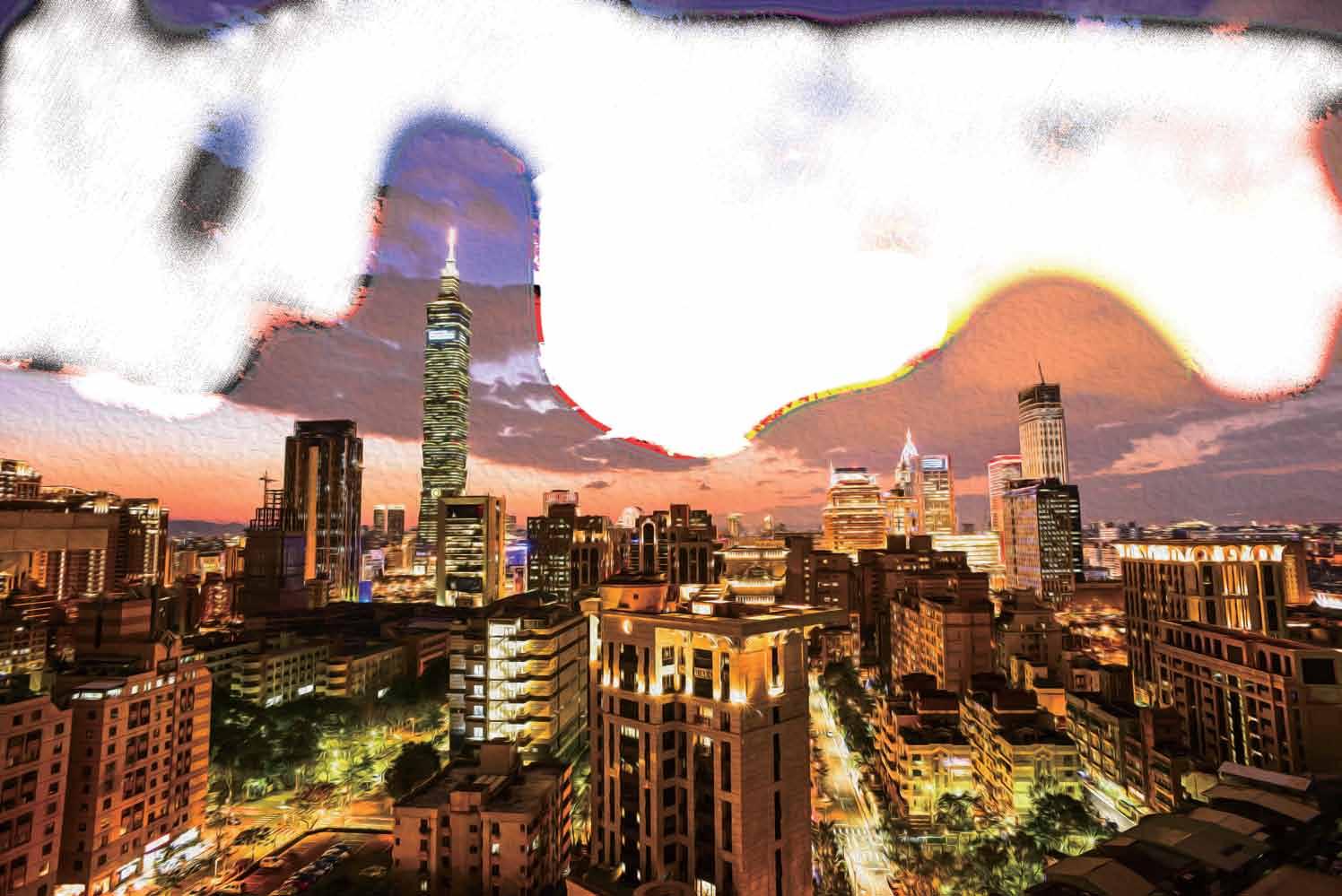Sergei Rachmaninov
Symphony No 2 in E minor, Op 27
Until his death in the United States, Sergei Rachmaninov (1873-1943) experienced the endless pain of being an exile after fleeing his native Russia in 1917. But even before this desperate situation changed his life, and before World War I had begun, a deep sense of melancholy underlies such works as the Second Symphony, almost anticipating the homesickness that would become second nature.
Rachmaninov’s First Symphony had been a miserable fiasco. Premiered in the spring of 1897 with a reportedly incompetent performance, it met with scathing criticism and did long-lasting damage to the young Rachmaninov’s confidence. He required therapy and years of psychological healing before he could seriously return to composing. But the Second Piano Concerto, which premiered in 1901, gave Rachmaninov his desperately needed breakthrough. Even so, he waited several more years before embarking on another symphony. He was ready by 1906, when Rachmaninov moved his family to Dresden so he could focus more intently on composing and temporarily forget the pressures of his life as a piano virtuoso and conductor back in Russia.
Rachmaninov wrote the Second Symphony in secret between the autumn of 1906 and the spring of 1907 and conducted the successful premiere in 1908 in St Petersburg. He conceived the Second on an ambitious scale. The original version lasts about one hour, but a tradition of substantial cuts became standard, with no apparent protests from Rachmaninov. In more recent years conductors have been returning to the composer’s original vision and thus perform the Second Symphony unabridged, as Vasily Petrenko does in this performance.
The first movement, the longest, begins with a pensive slow introductory theme that suggests Orthodox chant. Played initially by the low strings, it is the source of much of the thematic material to be heard later in the work. An Allegro moderato
follows as the violins play a lengthy theme. The epic journey is underway. Influences from Rachmaninov’s contemporary Richard Strauss blend with the composer’s beloved Tchaikovsky.
The second movement Scherzo, (played Allegro molto) is, according to biographer Geoffrey Norris, among “the most vigorous” pieces Rachmaninov wrote for orchestra. It includes an allusion to the Dies irae (most obviously in the coda), the chant associated with the Last Judgement in the Requiem – a tune that Rachmaninov wove into several other works. Contrasting with the main Scherzo material is a lyrical passage for strings and an exciting passage of fugal writing filled with rough humour that would be at home in a Shostakovich score.
The rhapsodic Adagio radiates a sense of longing. Its contrasting central section, notes the composer/ scholar Patrick Piggott, introduces a “note of questioning… much as lovers might demand from one another… repeated assurances of undying affection”.
The finale turns to E major and echoes moments of Wagner’s Prelude to Die Meistersinger – a work that greatly affected Rachmaninov. One of the Russian composer’s best-known melodies comes to the fore, and a bit of the Adagio is repeated before we arrive at a thrilling climax of scales that descend at different rates – a gesture that evokes the sound of bells ringing in jubilation. Rachmaninov rounds off this vast symphony with a sense of victory attained.
Programme notes by Thomas May
15.3.2017
特維特
《 100 首哈登格民謠》組曲,
作品 151 選段
〈求愛去〉
〈你〉
〈長扁琴旋律〉
〈倉卒婚禮〉
〈哈登格啤酒〉
艾爾加
E 小調大提琴協奏曲,作品 85
慢板─中板
緩板─極快板
慢板
快板─中板─不太快的快板
大提琴: 楚爾斯.莫克
西貝流士
D 大調第二交響曲,作品 43
小快板
彈性速度的行板
極急板
中庸的快板
Geirr Tveitt (1908-1981)
Excerpts from 100 Folk Tunes from Hardanger, Op 151
Friar-foter (Going-a-wooing)
Du (You)
Langeleiklåt (Langeleik Tune)
Hastverksbrudlaup (Hasty Wedding)
Haringøl (Hardanger Ale)
Edward Elgar (1857-1934)
Cello Concerto in E minor, Op 85
Adagio - Moderato
Lento - Allegro molto
Adagio
Allegro - Moderato - Allegro ma non troppo
Truls Mørk cello
中場休息 Interval
Jean Sibelius (1865-1957)
Symphony No 2 in D major, Op 43
Allegretto
Tempo andante, ma rubato
Vivacissimo
Allegro moderato
是晚演出曲目及次序或有更改
Pieces and their order of performance are subject to change
樂曲介紹 Programme notes
特維特
《 100 首哈登格民謠》組曲,作品 151 選段
佩特連科與奧斯陸愛樂在第二場節目,繼續探索 音樂旅程與地方身分的概念,集中於代表三個地 理空間的三位作曲家。首先有特維特( 1908– 81) 傳世之作。葛利格在十九世紀發揮浪漫主義影 響;特維特在二十世紀與他相應。就如葛利格, 他既是鋼琴家,亦為作曲家,以音樂表達祖國挪 威的民間傳統。又如葛利格,他年少時前往德國 萊比錫學習作曲。
他在歐陸多留了幾年,於巴黎及維也納深造。或 許有點矛盾,雖然特維特吸收了多國風格(如他 對法國印象派與俄羅斯色彩的喜愛,我們都可聽 見),他卻一再肯定其對祖國民族傳統的熱愛, 特別是位於挪威西岸哈登格區的傳統。哈登格區 有世上最美的風景,壯麗的峽灣景觀圍繞四周, 其瀑布和果樹遐邇聞名。特維特的祖先來自該區 北部的卡化姆,他於第二次世界大戰期間移居該
地。不像居於城市,特維特不像居於城市、但走 到鄉間採集民間音樂的匈牙利作曲家巴托克;他 與原住民同住,受到其音樂的啟發,也探索神秘 主義、超自然力量和基督教傳入以前的民俗等相 關興趣。
在上世紀四十年代,特維特實行一個具野心的計 畫,蒐羅聲稱逾千首民間旋律(基本上是歌曲, 包括文字或隱含的故事)。他出版了一套五十首 鋼琴改編作,亦寫成一系列管弦樂組曲,他統稱 後者為《 100 首哈登格民謠》,作品 151。但是, 1970 年在家裏發生的大火,吞噬了芸芸作品中大 量未曾出版的手稿,只有第一、第二、第四和第 五組曲完好無損(我們今晚聽到第一和第四組曲
的選段)。認識特維特這個作曲家的人不多,這 是原因之一。另一個原因,是二次大戰之後,使 人們對他專研的民族音樂失去好感,甚至有所疑 慮。也許,隨着更多人聽過特維特的音樂,他們 會重新評估他的成就。
人們也爭論這些旋律本身是否真正民間音樂。有 多少是特維特拿短短的樂句加以發展,甚至是 他自己創作的素材?他精通哈登格民間風格,把 調式旋律(取代慣常的大、小調)與一點現代和 聲跟想當然的多彩配器融合起來。是晚演出包括 第一及第四組曲的歌曲,且不順序演奏。第一組 曲包含的題材廣泛,其中我們聽到管弦樂在〈長 扁琴旋律〉樂章中模仿挪威的長扁琴(指可奏持 續長音的齊特琴),以及〈倉卒婚禮〉裏用以化 解一對年輕戀人闖禍的幽默。第四組曲則為了描 繪一個正當婚禮而編排。我們聽到意味深長的 〈你〉(想或是向特維特的妻子致意,他倆在 1944 年結婚)和歡快活潑的〈求愛去〉;最後 還有〈哈登格啤酒〉,以音樂頌讚可使人盡興的 當地醇釀。
特維特 Geirr Tveitt
Geirr Tveitt
Excerpts from 100 Folk Tunes from Hardanger, Op 151
In their second programme, Vasily Petrenko and the Oslo Philharmonic continue to explore the concept of musical travel and local identity, focusing on three composers representing three different geographical spaces. They begin with the legacy of Geirr Tveitt (1908-1981), a kind of 20th century counterpart to the dominant Romantic influence of Edvard Grieg from the century before. Like Grieg, Tveitt was both a pianist and composer who expressed the folkloric heritage of his native Norway in music. Also like Grieg, as a young man Tveitt headed to Leipzig, Germany, to study composition.
He remained on the Continent for several more years, continuing his studies in Paris and Vienna. Perhaps paradoxically, while Tveitt absorbed a diversity of international styles – we can hear evidence of a fondness for French Impressionism and Russian colour, for example – he reaffirmed his fascination with the national traditions of his homeland, and specifically with the traditions associated with the Hardanger region on Norway’s west coast. One of the most scenic landscapes in the world and nestled amid breathtaking fjord vistas, the Hardanger region is famous for its waterfalls and fruit trees. Tveitt’s family hailed from Kvam (on the northern side of this region), and during World War II he resettled there. Unlike the Hungarian Belá Bartók, who lived in the city but travelled to the countryside to collect folk music, Tveitt spent his life among the indigenous people whose music inspired him, exploring related interests in mysticism, supernaturalism, and preChristian folklore.
During the 1940s Tveitt engaged in an ambitious project of collecting what he claimed to be more than 1,000 folk tunes (essentially songs, including words or implied stories). He published a set of 50 arrangements for piano and also created a series of orchestrated suites presenting what he collectively called 100 Folk Tunes from Hardanger, Op 151.
However, a catastrophic fire at his home in 1970 destroyed a large quantity of unpublished manuscripts from his prolific output. Only Suites 1, 2, 4, and 5 survived intact (of which we hear excerpts from Suites 1 and 4 this evening). This is one reason Tveitt remains little known as a composer. Another is the fact that in the aftermath of World War II, his focus on national music fell out of favour and was even regarded with suspicion. Perhaps a fresh understanding of Tveitt’s achievements will emerge as more people hear his music.
The authenticity of the tunes themselves as folk music is also a matter of debate. To what extent did Tveitt elaborate mere fragments, or even compose his own material? His mastery of Hardanger folk style fuses modal melodies (in place of the conventional major and minor) with touches of modernist harmony and of course evocative orchestration. Tonight’s performance features songs from Suites No 1 and 4, performed in a mixed order. Suite No 1 comprises a widely varied collection of topics, from which we hear an orchestral imitation of the Norwegian langeleik (drone zither) and the humorous Hasty Wedding arranged to resolve the sticky situation a pair of young lovers have gotten into. Suite No 4, by contrast, is organised around the depiction of a proper wedding. We hear the atmospheric You (thought perhaps to be in honour of Tveitt’s wife, whom he married in 1944), the jauntily cheerful Gooing-a-Wooing , and, to conclude, Hardanger Ale, a musical ode to the heady local brew which urges on the festivities.
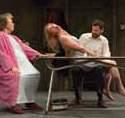



艾爾加
小調大提琴協奏曲,作品
艾爾加( 1857 – 1934)的破格作品使他被公認為 當時頂尖的作曲家之一,但不出二十年間,他卻 見證了賦予其藝術身分的文化被沖走。他本已成 為英國音樂復興的元老和先鋒,但在第一次世界 大戰結束時,他已被視作過時的古董。
1919 年的《大提琴協奏曲》終成了艾爾加最後完 成的大型管弦樂作品。雖然它未必真有告別之 意,此音樂卻似乎不停回望過去,充滿浪漫時期 暮景殘光的哀傷。一次大戰把舊有的必然事物永 遠摧毀;其後,許多人都在想這個美麗新世界會 是何等景象。
這首《大提琴協奏曲》現於全世界同類曲目中備 受喜愛,但它在 1919 年的首演(由沙文德擔任 獨奏、艾爾加擔任指揮與倫敦交響樂團演出)因 為彩排時間不足卻是一場災難。經過大提琴家杜 普蕾等傳奇演繹者於數十年後提倡,此作品才再 次受人注目。
協奏曲以四個樂章構成,一開始獨奏奏出戲劇性 的宣叙調。這奠定了大提琴在整部作品中將一直
保持的突出地位,無論氣氛轉向靜思抑或熱情。 艾爾加運用豐富想像力,使獨奏與樂團戲劇性地 互相呼應。先是中提琴勾勒蕩漾的哀慟主題,後 有獨奏大提琴探尋其深意;另一種憂愁則於第二 主題出現。兩者之不同,也許就是人前和人後悲 傷的分別。
通往第二樂章的過渡樂段並不尋常,它是另一個 建基於撥弦音的宣叙調。獨奏者似乎不願放下 哀傷,但輕鬆的諧謔曲還是出現了,重複音快速 震動著。然後是動人〈慢板〉樂章的沉痛:這是 從悲哀提煉出來的音樂,沒有自憐的一處平靜。 記憶帶來慰藉,但同時又離不開其必然產生的痛 苦。
四個樂章中最長的是終樂章。大提琴的華彩樂段 也像宣叙調,用以從〈慢板〉樂章過渡到此。
節奏活潑的主題使這樂章生氣勃勃;樂章變化豐 富且充滿戲劇性,徘徊於自信和內省之間。臨近 尾聲,一個更緩慢、更嚴肅的主題富有詩意地浮 現出來。此前聽過的音樂重現,儼如殘光下的陰 影。最後,速度加快,作激揚的告別。
Edward Elgar
Cello Concerto in E minor, Op 85
Within a mere two decades of the breakthrough that brought him recognition as one of the premiere composers of his era, Sir Edward Elgar (1857-1934) witnessed the culture that gave him his sense of artistic identity being swept away. He had become the grand old man and spearhead of a Renaissance in English music, yet by the end of World War I, Elgar was already being considered an unfashionable relic of the past.
The Cello Concerto of 1919 stands as Elgar’s last completed full-scale composition for orchestra. While not necessarily planned as a gesture of farewell, this music seems full of backward glances; an elegiac sense of Romanticism at its sunset pervades the score. In the wake of World War I, which had forever shattered old certainties, many were wondering what this brave new world promised.
The Cello Concerto is now a beloved part of the international repertoire, but its premiere in 1919 (with Felix Salmond as the soloist and the composer leading the London Symphony Orchestra) was a fiasco owing to inadequate rehearsal time. Such legendary interpreters as the cellist Jacqueline du Pré championed the work decades later, bringing this music back into the spotlight.
Elgar cast the concerto in four movements, giving the soloist a theatrical recitative at the very start. This establishes the vivid presence that the cello will maintain throughout the work – whether the mood tends towards quiet contemplation or passionate expression. Elgar dramatises the interplay between soloist and orchestra with great imagination. The violas first trace the elegiac main theme, characterised by lilting, wavelike motion, before the cello soloist elaborates its deeper implications.
Another brand of melancholy meanwhile emerges in the second theme. The contrast between the two perhaps suggests the distinction between public and private grief.
An unusual transition leads into the second movement: another recitative, this time based on plucked notes. The soloist seems reluctant to set the elegiac frame of mind aside, but a lighthearted scherzo follows, pulsating with fast-paced repetitions. Then comes deep tragedy in a stirring Adagio – music that is the pure distillation of grief. Here Elgar conveys a serenity free of self-pity. Memories offer consolation, yet at the same time they are inseparable from the pain they inevitably trigger.
The finale is the longest of the four movements. Another recitative-like cadenza for the cellist serves as a bridge from the Adagio. Springing to life with a rhythmically lively main theme, this highly varied movement is highly dramatic, wavering between confident assertion and introspection. Towards the end, a slower, graver theme emerges in poetic fashion. Flashbacks to previously heard material cast a shadow against the music’s dying glow. The tempo at last quickens for an impassioned adieu.
西貝流士的音樂所呈現的廣漠令人驚嘆,前景與 背景疊映,必然產生風景的意象,尤其是北方 極地的風景。他深愛祖國芬蘭大自然之美,不足 為怪。但就算其作品是風景畫,它們也不是以聲 音描繪景物:它們表現了對壯麗大自然的深厚感 情,還有求索的音樂想像的遼闊內在疆域。
壯闊的《第二交響曲》正是如此。跟《第一交響 曲》( 1898 – 99)一樣,西貝流士創作此曲初時 有些音樂以外的聯想,但他很快便摒棄它們,寧 可純粹於音樂上發展作品素材內裏的意念。 1901 年,作曲家得以偕同家人到意大利旅行,他就在 那裏起草新作。意大利 尤其是佛羅倫斯與拉 帕盧 跟熟悉的北國幽暗風景有所對應,雖然 西貝流士起初的動力驅使他寫一部有關唐璜被死 神纏上的陰森作品。(受此內容啟發而寫的音樂 後來成為行板樂章開頭的動機。)
《第二交響曲》在 1902 年 3 月的首演大為成功。
作曲家有同胞認為新作表達了祖國當時在沙俄 壓迫下的鬥爭(而終樂章則代表類似解放的勝 利)。但人們企圖解釋西貝流士音樂創作的意 義,使他感到厭煩。在幾年後的與馬勒的一段著 名的對話中,馬勒認為一首交響曲「必須包羅萬 象」;西貝流士則說他欣賞交響曲的「樸實、風 格以及深邃邏輯」,後者使「所有動機於內在互 相連結起來」。
《第二交響曲》以好幾種元素構成它龐大的規模 (除了動機,還有和弦、音色、節奏甚至速度變 化),它們互有這種「內在連結」,就似地底的 根莖一樣。例如,起首的音樂聽起來只像是一些 即將開始的東西的脈動伴奏,但它的重複上行音 卻轉化為作品的主要標識。慣常的做法是先呈現 素材,其後將它分割成細小片段。與之相反,西 貝流士帶來一連串迥然不同的片段(有田園風味 的、有熱情澎湃的),然後於樂章進行途中把他 們混和在一起,並融合成更大的整體。
行板樂章也富於變化,巴松管的沉鬱第一主題與 最初以弦樂奏出的、清亮的禱告主題交替。其 間卻陰霾密佈、風雨交加,發展出有力的銅管聖 詠,後者由節奏簡練的動機推進。西貝流士聲音 風景的一大特徵,就是這種類似原始的激動跟如 有磐石之固的衍生物之間的對比。在飛快的諧謔 曲又出現了另一種肌理,與此形成對比的是中段 初始的靜態:雙簧管的連續九個降 B 音在此呼應 了全曲的開端。
諧謔曲直接進入綿長的終樂章,參照了貝多芬 《第五交響曲》的模式。在這裏,西貝流士重訪 我們於作品中經歷過的情感,從田園及風雨到樂 譜最後數頁的勝利氣氛,有雄偉騰歡之勢。
樂曲介紹中譯 尹莫違
Jean Sibelius
Symphony No 2 in D major, Op 43
The music of Jean Sibelius suggests such an astonishing sense of spaciousness, of foreground against background, that it inevitably conjures imagery of landscapes – and often specifically Northern, extreme ones, at the limits. It’s no surprise that Sibelius deeply loved the natural beauty of his native Finland. If these compositions are landscapes, though, they are not picturesque sonic “illustrations”. Rather, they convey both a profound feeling for the grandeur of nature and the immense, interior terrain of a searching musical imagination.
This is the case for the epic expansiveness of the Second Symphony. As in his First Symphony (1898-99), Sibelius embarked on the Second with a number of extra-musical associations that he soon abandoned in favour of a purely musical development of ideas from within the material of the piece. In 1901 the composer had an opportunity to travel with his family to Italy, where he began sketches for the new work. Italy itself – particularly Florence and Rapallo – provided a counterpart to the familiar, dark landscapes of the North, although one of the composer’s initial impulses was for a rather Gothic piece around the figure of Don Juan being stalked by Death. (The music this inspired became the opening motif of the Andante).
The Second Symphony enjoyed a major triumph when it was premiered in March 1902. Some of the composer’s Finnish colleagues argued that the new work expressed the contemporary struggle of their homeland under the yoke of Tsarist Russia (with the finale representing a kind of apotheosis of liberation). But Sibelius grew impatient with such attempts to explain away the significance of his musical creation. In a famous exchange with Mahler a few years later, Sibelius contrasted the former’s belief that a symphony “must embrace everything” with his own admiration for the genre’s
“severity and style and the profound logic”, which creates “an inner connection between all the motifs”.
The large scale of the Second Symphony is built on a number of elements (motifs, but also chords, timbral colours, rhythms, even tempo changes) that share such “inner connections”, like an underground root system. The first music we hear, for example, sounds like a mere pulsing accompaniment to something about to begin. Yet its repeated ascending notes turn out to encode a central signature of the work. In contrast to the more conventional pattern of presenting material and then fragmenting it, Sibelius gives us a series of highly contrasting fragments (some pastoral, others passionate) that he then mixes together and fuses into larger wholes as the movement progresses.
The Andante is also highly varied, moving between the brooding first theme in the bassoons and a luminous prayer first heard on the strings. What intervenes is a tempestuous clouding-over, which builds to a hefty brass chorale propelled by a terse rhythmic motif. A signature aspect of Sibelius’s soundscape is this contrast between a sort of elemental agitation and outgrowths of rock-like solidity. Still another kind of texture emerges in the whirling speed of the Scherzo, here contrasted with the calming stasis of the oboe’s ninefoldrepeated B-flat at the start of the Trio (an echo of the Second Symphony’s opening).
The Scherzo leads directly into a lengthy finale (the model here is Beethoven’s Fifth Symphony). Here Sibelius recapitulates the emotional states we have traversed through the work, from the pastoral and the stormy to the mood that triumphs in the final pages: a spirit of heroic jubilation.
Programme notes by Thomas May
Jean Sibelius
佩特連科 指揮
Vasily Petrenko Conductor
瓦西里.佩特連科 1976 年出生,於俄羅斯
最古老的音樂學校之一聖彼得堡男童音樂學
校開始接受音樂教育,後就讀於聖彼得堡音 樂學院。
佩特連科為奧斯陸愛樂樂團、英國皇家利物 浦愛樂樂團、歐盟青年樂團的首席指揮,以
及俄羅斯國立學院交響樂團客席首席指揮。
他亦於 2009 至 2013 年間擔任英國國家青 年交響樂團客席首席指揮,以及於 1994 至 1997 年間擔任米克洛夫斯基劇院客席首席指 揮,並開始駐團指揮的職業生涯。
佩特連科曾合作過的世界最頂尖樂團包括:
倫敦交響樂團、倫敦愛樂樂團、俄羅斯國家 樂團、法國國家管弦樂團、捷克愛樂樂團、
Vasily Petrenko was born in 1976 and started his music education at the St Petersburg Capella Boys Music School – the oldest music school in Russia – before then studying at the St Petersburg Conservatoire.
Petrenko is Chief Conductor of the Oslo Philharmonic Orchestra, Chief Conductor of the Royal Liverpool Philharmonic Orchestra, Chief Conductor of the European Union Youth Orchestra, and Principal Guest Conductor of the State Academic Symphony Orchestra of Russia. Petrenko has also served as Principal Conductor of the National Youth Orchestra of Great Britain from 2009-2013, and Principal Guest Conductor of the Mikhailovsky Theatre (formerly the Mussorgsky Memorial Theatre of the St Petersburg State Opera and Ballet) where he began his career as Resident Conductor from 1994 to 1997.
芬蘭廣播交響樂團、東京 NHK 交響樂團及 悉尼交響樂團。曾亮相於愛丁堡國際藝術節 和奧地利格拉費內格音樂節,並經常於 BBC 逍遙音樂會演出。近年與多個北美樂團的首 次合作均非常成功,包括費城管弦樂團、洛 杉磯愛樂樂團及三藩市、波士頓、芝加哥、 蒙特利爾和聖路易斯交響樂團, 以及阿斯 本音樂節和瑞維尼亞夏季音樂節。
2016 / 17 樂季及後的重點演出包括擔任首席 指揮與歐盟青年樂團的巡迴演出、與奧斯陸 愛樂樂團的歐洲及亞洲巡迴演出,亦將分別 在利物浦和奧斯陸指揮貝多芬交響曲全集, 以及首次與匹茲堡交響樂團合作,並跟同為 首次合作的克利夫蘭管弦樂團於櫻花節演 出。
歌劇對佩特連科來說也是同樣熟悉的範疇, 他指揮過的劇目超過三十個。近幾個劇季的 演出包括:漢堡國立歌劇院的《黑桃皇后》 ;國家巡迴歌劇團的《沙皇鮑里斯》 ;米 克洛夫斯基劇院的《尤金.奧尼金》、《波 希米亞生涯》和《卡門》 ;皇家利物浦愛 樂樂團的《托斯卡》和《帕西法爾》。 2016 年於巴伐利亞國立歌劇院首演《沙皇鮑里 斯》非常成功。未來計劃包括蘇黎世歌劇院 的《莫桑斯克縣的麥克白夫人》。
佩特連科在唱片錄音方面亦有相當出色的成 績。為拿索斯唱片錄製、與皇家利物浦愛 樂樂團合作的蕭斯達高維契交響樂全集(於 2015 年以盒裝形式推出)就取得國際讚譽。
此外,跟奧斯陸愛樂樂團錄製的專輯包括與 大提琴家楚爾斯.莫克合作的蕭斯達高維契 大提琴協奏曲( Ondine 唱片)、與小提琴家 斯卡賴德合作的史曼諾夫斯基小提琴協奏曲 ( Orfeo 唱片)、由 Lawo Classics 發行的史 克里亞賓全套交響樂第一部分及 2016 年秋 季的普羅科菲耶夫的羅密歐與茱麗葉芭蕾全 套配樂。
Petrenko has worked with many of the world’s most prestigious orchestras including the London Symphony Orchestra, London Philharmonic Orchestra, Philharmonia, Russian National Orchestra, Orchestre National de France, Czech Philharmonic, Finnish Radio Symphony, NHK Symphony Tokyo and Sydney Symphony. He has appeared at the Edinburgh International and Grafenegg Festivals, and made frequent appearances at the BBC Proms. Recent years have seen a series of highly successful North American debuts, including the Philadelphia Orchestra, Los Angeles Philharmonic, and the San Francisco, Boston, Chicago, Montreal and St Louis Symphony Orchestras, and appearances at the Aspen and Ravinia summer festivals.
Highlights of the 2016/17 season and beyond include Petrenko’s tours with the European Union Youth Orchestra as Chief Conductor, dates in Europe and Asia with the Oslo Philharmonic Orchestra, and complete cycles of the Beethoven Symphonies in both Liverpool and Oslo. Petrenko will also make his debut with the Pittsburgh Symphony Orchestra, and with the Cleveland Orchestra at the Blossom Festival.
Equally at home in the opera house, and with over 30 operas in his repertoire, Petrenko has in recent seasons conducted Pique Dame at Hamburg State Opera, Boris Godunov at the National Reisopera, Eugene Onegin , La Bohème and Carmen at the Mikhailovsky Theatre and both Tosca and Parsifal with the Royal Liverpool Philharmonic. 2016 saw a highly successful debut at the Bayerische Staatsoper with Boris Godunov, and future plans include performances of Lady Macbeth of Mtsensk with Zurich Opera.
Petrenko has established a strongly defined profile as a recording artist. His Shostakovich symphony cycle for Naxos Records with the Royal Liverpool Philharmonic Orchestra (collated as a boxset in the autumn of 2015) has garnered worldwide acclaim, and with the Oslo Philharmonic Orchestra he has released the Shostakovich cello concertos with Truls Mørk (Ondine), the Szymanowski violin concertos with Baiba Skride (Orfeo), and the first instalment in a cycle of Scriabin’s symphonies (Lawo Classics), while in autumn 2016 Lawo Classics also released Prokofiev’s complete Romeo and Juliet ballet.
© Mark McNulty
楚爾斯.莫克
Truls Mørk Cello
莫克的演奏引人入勝,蒼勁有力,融合熱誠 與優雅,是當今傑出大提琴家。
莫克享負盛名,曾與多個著名管弦樂團合 作,包括:巴黎樂團、柏林愛樂樂團、維也
納愛樂樂團、荷蘭皇家音樂廳管弦樂團、慕 尼黑愛樂樂團、愛樂管弦樂團、倫敦愛樂樂 團及與萊比錫布業大廳樂團。在北美,同台 演出的樂團有紐約愛樂樂團、費城及克里夫 蘭管弦樂團、波士頓交響樂團及洛杉磯愛樂 樂團。莫克曾與多名指揮家攜手演出,例如: 馬利斯.楊遜斯、大衛.仙曼、曼弗雷德. 霍內克、埃薩-貝卡.沙羅倫、古斯塔沃. 杜達美、西蒙.歷圖爵士、長野健、亞尼克. 聶澤-賽金及克利斯多夫.艾遜巴赫等。
Truls Mørk’s compelling performances, combining fierce intensity, integrity and grace, have established him as one of the pre-eminent cellists of our time.
He is a celebrated artist who performs with the most distinguished orchestras including the Orchestre de Paris, Berliner Philharmoniker, Wiener Philharmoniker, Royal Concertgebouw Orchestra, Münchner Philharmoniker, Philharmonia and London Philharmonic orchestras and the Gewandhausorchester Leipzig.
In North America he has appeared with the New York Philharmonic, The Philadelphia and Cleveland orchestras, Boston Symphony Orchestra and the Los Angeles Philharmonic. Conductor collaborations include Mariss Jansons, David Zinman, Manfred Honeck, EsaPekka Salonen, Gustavo Dudamel, Sir Simon Rattle, Kent Nagano, Yannick Nézet-Séguin and Christoph Eschenbach, amongst others.
2016 / 17 樂季,莫克是哥德堡交響樂團的 駐團藝術家,演出協奏曲及室樂。他也是 2016 洛杉磯皮亞蒂戈斯基國際大提琴音樂 節的特約嘉賓, 2017 年將亮相於韋爾比亞 音樂節。
莫克熱愛當代音樂,演出逾 30 場首演,包 括:拉特化拿的《朝向地平綫》(英國廣播 電台交響樂團/約翰.史托加德)、巴維. 哈斯的《大提琴協奏曲》(維也納愛樂樂團 /喬納森.諾特),以及潘德瑞茲基的《三 大提琴協奏曲》( NHK 交響樂團/夏爾.杜 托爾)。
莫克專輯質素優越,曾為多間唱片公司灌錄 多首著名大提琴協奏曲,例如:維京古典 唱片、 EMI 百代唱片、德意志留聲機唱片、 Ondine 唱片、藝術新星唱片及山度士唱片, 當中不少專輯榮獲國際獎項,包括:留聲機 唱片大獎、格林美獎、 MIDEM 獎及德國古典 回聲獎等。獲獎專輯諸如:德伏扎克協奏曲 (奧斯陸愛樂樂團/馬利斯.楊遜斯)、布 列頓大提琴交響樂及艾爾加協奏曲(西蒙. 歷圖爵士/伯明罕市立交響樂團),以及巴 赫無伴奏大提琴組曲全集及布列頓大提琴組 曲。最近推出的專輯包括:蕭斯達高維契協 奏曲(奧斯陸愛樂樂團/佩特倫科)及聖桑 協奏曲(卑爾根愛樂樂團/尼蒙爾.約菲)。
莫克最初跟隨父親學藝,後來師隨法斯.赫 曼臣、海因里希.席夫及娜塔莉亞.夏可芙 絲卡雅。早期,莫克曾贏得多個大賽,例如: 莫斯科柴可夫斯基音樂大賽( 1982 年)、 佛羅倫斯卡薩多大提琴大賽( 1983 年)、 布拉提斯拉瓦歐洲廣播電台聯盟大賽聯合國 教科文組織獎( 1983 年)及紐約瑙姆堡大 賽( 1986 年)。
During the 2016/17 season Truls Mørk is Artist-inResidence with the Gothenburg Symphony which will include both concerto performances and chamber music. He was one of the featured artists at the 2016 Piatigorsky International Cello Festival in Los Angeles and will return to the Verbier Festival in 2017.
A great champion of contemporary music, Truls Mørk has given in excess of 30 premieres. These include Rautavaara’s Towards the Horizon with the BBC Symphony Orchestra/John Storgårds, Pavel Haas’ Cello Concerto with Wiener Philharmoniker/Jonathan Nott, and Krzysztof Penderecki's Concerto for Three Cellos with the NHK Symphony Orchestra/Charles Dutoit.
With an impressive recording output, Truls Mørk has recorded many of the great cello concertos for labels such as Virgin Classics, EMI, Deutsche Grammophon, Ondine, Arte Nova and Chandos, many of which have won international awards including Gramophone, Grammy, Midem and ECHO Klassik awards. These include Dvo ˆrák’s Concerto (Mariss Jansons/Oslo Philharmonic), Britten's Cello Symphony and Elgar's Concerto (Sir Simon Rattle/CBSO), as well as the complete Bach Cello Suites and Britten Cello Suites. His most recent recordings include Shostakovich’s Concertos with the Oslo Philharmonic Orchestra/Vasily Petrenko, and the Saint-Saëns Concertos together with the Bergen Philharmonic Orchestra/Neeme Järvi.
Initially taught by his father, Truls Mørk continued his studies with Frans Helmerson, Heinrich Schiff and Natalia Schakowskaya. In his early career he won a number of competitions such as the Moscow Tchaikovsky Competition (1982), Cassado Cello Competition in Florence (1983), the Unesco Prize at the European Radio-Union competition in Bratislava (1983) and the Naumberg Competition in New York (1986).
Sophie Zhai
© Johs Boe
Vasily Petrenko Conductor
Truls Mørk Soloist
FIRST VIOLINS
Elise Båtnes Concertmaster
Pauls Ezergailis
André Orvik
Eileen Siegel
Jørn Halbakken
Arild Solum
Øyvind Fossheim
Alyson Read
Per Sæmund Bjørkum
Arve Moen Bergset
Bogumila Nystedt
Alison Rayner
Leah Meredith
Mariam Maghradze
Emilie Gudim
Nora Skreien
Karolina Radziej
SECOND VIOLINS
Arne Jørgen Øian
Dagny Bakken
Vegard Johnsen
Svein Skretting
Niels Aschehoug
Marit Egenes
Ragnar Heyerdahl
Hans Morten Stensland
Baard W Andersen
Aslak Juva
Aleksandre Khatiskatsi
Emil Huckle-Kleve
Emilie Haagenrud
Mons M Thommesen
Philharmonic
VIOLAS
Catherine Bullock
Henninge Landaas
Anders Rensvik
Birgitta Halbakken
Eirik Sørensen
Povilas Syrrist-Gelgota
Stig Ove Ose
Cecilia Wilder
Bénédicte Royer
Arthur Bedouelle
Andrés Maurette
Pål Solbakk
CELLOS
Louisa Tuck
Bjørn Solum
Katharina Hager-Saltnes
Hans Josef Groh
Cecilia Götestam
Kari Ravnan
Johannes Martens
Jan Clemens Carlsen
Joon-Ho Shim
Tom Rathbone
DOUBLE BASSES
Kenneth Ryland
Dan Styffe
Cécile-Laure Kouassi
Kjetil Sandum
Frode Berg
Tuomo Savolainen
Steinar Børmer
Erlend Skei
FLUTES
Tom Ottar Andreassen
Helen Benson
Trond Magne Brekka
Vivian Ellefsen
PICCOLOS
Helen Benson
Trond Magne Brekka
OBOES
David Strunck
Håvard Norang
Min Hua Chiu
COR ANGLAIS
Håvard Norang
CLARINETS
Leif Arne Pedersen
Fredrik Fors
Pierre Xhonneux
Francois Lemoine
E- FLAT CLARINET
Pierre Xhonneux
BASS CLARINET
Francois Lemoine
BASSOONS
Per Hannisdal
Roman Reznik
Frode Carlsen
CONTRABASSOON
Frode Carlsen
HORNS
Inger Besserudhagen
Hongpark Kim
Jan Olav Martinsen
Thomas Gimse
Bente Rognsaa
TRUMPETS
Brynjar Kolbergsrud
Jonas Haltia
Axel Sjöstedt
Per Ivarsson
TROMBONES
Terje Midtgård
Thorbjørn Lønmo
Eirik Devold
Audun Breen
TUBA
Frode Amundsen
TIMPANI
Tom Vissgren
Torbjørn Ottersen
PERCUSSION
Christian Berg
Terje Viken
Heming Valebjørg
Torbjørn Ottersen
HARP
Birgitte Håvik
PIANO
Gonzalo Moreno
OSLO PHILHARMONIC ADMINISTRATION
Ingrid Røynesdal CEO
Roger Olstad Director of Orchestra Operations
Alexander Taylor Head of Artistic Planning
Atle Opem Stage Manager
Simen Solbakken Stage Manager
Ellen Bjørnebye Orchestra Manager
Steinar Yggeseth Librarian
Gisle Sandvand Producer
Karen van der Starre Physio
TOUR MANAGEMENT BY INTERMUSICA
Matthew Green Coordinator, International Touring
Peter Ansell Director / Head of International Touring
Stephen Lumsden Managing Director
•Academy of Jazz
Acorn Design
Alfie Leung Design
Alliance Francaise
AMC Pacific Place
•巴塞爾藝術展 Art Basel
•亞洲協會香港中心 Asia Society Hong Kong Center
支持及協助 Support and Co-operation
•香港畫廊協會 Hong Kong Art Gallery Association
•香港藝術行政人員協會
Hong Kong Arts Administrators Association
•香港藝術中心 Hong Kong Arts Centre
•香港藝術學院 Hong Kong Art School
•香港浸會大學 Hong Kong Baptist University
•澳洲駐港總領事館 Australian Consulate-General, Hong Kong
•奧地利駐港總領事館
Austrian Consulate General in Hong Kong
•樺利廣告有限公司 Avanny Advertising Co Ltd
•龍堡國際 B P International
•香港肯德基 Birdland (HK) Limited
•英國文化協會 British Council
Broadway Cinema
•百老匯院線 Broadway Circuit
•Broadway The One
•明愛白英奇賓館 Caritas Bianchi Lodge
•牛棚藝術村 Cattle Depot Artist Village
•中區遮打花園 Chater Garden
•城市當代舞蹈團 City Contemporary Dance Company
•加拿大駐香港總領事館
Consulate General of Canada in Hong Kong and Macau
•埃及駐港總領事館 Consulate General of Egypt
•愛沙尼亞駐港總領事館 Consulate General of Estonia
•芬蘭駐香港總領事館
Consulate General of Finland in Hong Kong
•法國駐港澳總領事館
Consulate General of France in Hong Kong and Macau
•德國駐香港總領事館
Consulate General of Germany in Hong Kong
•希臘駐香港總領事館
Consulate General of Greece in Hong Kong
•印度駐香港總領事館 Consulate General of India
•愛爾蘭駐港總領事館
Consulate General of Ireland, Hong Kong
•意大利駐香港領事館
Consulate General of Italy in Hong Kong
•馬里駐港領事館 Consulate General of Mali
•羅馬尼亞駐香港特別行政區和澳門特別行政區總領事館
Consulate General of Romania in HKSAR and Macau SAR
•西班牙駐香港總領事館
Consulate General of Spain in Hong Kong
•瑞士駐香港總領事館
Consulate General of Switzerland in Hong Kong
•捷克共和國駐港總領事館
Consulate General of the Czech Republic in Hong Kong
•俄羅斯駐香港總領事館
Consulate General of the Russian Federation in Hong Kong SAR, PRC
•美國駐港澳總領事館
Consulate General of the United States, Hong Kong & Macao
•澳門特別行政區政府文化局
Cultural Affairs Bureau of the Macao S.A.R. Government
•德勤企業管理咨詢(香港)有限公司
Deloitte Consulting (Hong Kong) Limited dreamoffish Limited
•風采中學 Elegantia College
•誠品香港 Eslite Hong Kong
•粉嶺禮賢會中學 Fanling Rhenish Church Secondary School
•藝穗會 Fringe Club
•鳳溪廖萬石堂中學
Fung Kai Liu Man Shek Tong Secondary School
•港威酒店 Gateway Hotel
•六國酒店 Gloucester Luk Kwok Hong Kong
•香港歌德學院 Goethe-Institut Hong Kong
•香港君悅酒店 Grand Hyatt Hong Kong
•青苗琴行 Greenery Music
•快達票香港有限公司 HK Ticketing
•先鋒廣告製作有限公司 Sin Fung Advertising Production Co., Ltd.
•事必達推廣有限公司 Speedy Promotion Limited
•聖約翰座堂 St John's Cathedral
•Steam Studio
•辰衝圖書有限公司 Swindon Book Co. Ltd.
音樂系 Department of Music
語文中心 Language Centre
圖書館 Library
•香港大會堂 Hong Kong City Hall
•香港文化中心 Hong Kong Cultural Centre
•香港知專設計學院 Hong Kong Design Institute
•香港經濟貿易辦事處
Hong Kong Economic and Trade Office
•香港黃金海岸酒店 Hong Kong Gold Coast Hotel
•香港文學生活館 Hong Kong Literature House
•香港海事博物館 Hong Kong Maritime Museum
•香港管弦樂團 Hong Kong Philharmonic Orchestra
•香港聖公會 Hong Kong Sheng Kung Hui
•香港太空館 Hong Kong Space Museum
•香港旅遊發展局 Hong Kong Tourism Board
•印度遊樂會 Indian Recreation Club
•香港洲際酒店 InterContinental Hong Kong
Intox Design & Communication Co. Ltd.
•益普索香港 Ipsos Hong Kong Limited
•港島太平洋酒店 Island Pacific Hotel Hong Kong
•鍾詠賢芭蕾舞學校 Ivy Chung School of Ballet
•王仁曼芭蕾舞學校 Jean M. Wong School of Ballet
JellyBin Limited
•高山劇場 Ko Shan Theatre
•九龍木球會 Kowloon Cricket Club
•九龍公園 Kowloon Park
•Kubrick
•葵青劇院 Kwai Tsing Theatre
•光華新聞文化中心 Kwang Hwa Information & Culture Centre
Lanson Place Hotel, Hong Kong
•中央人民政府駐香港特別行政區聯絡辦公室 Liaison Office of the CPG in HKSAR
•立方國際青年公寓 M3 International Youth Apartment
•馬哥孛羅香港酒店 Marco Polo Hongkong Hotel
•MEC Interaction
•外交部駐港特派公署 Ministry of Foreign Affairs in HKSAR
MOViEMOViE
•李鏡輝先生 Mr Alpha Li
•岑智頤先生 Mr Henry Shum
•梁儉豐先生 Mr Kenny Leung
•黃銘熙先生 Mr Ronny Wong
•馬師雅女士 Ms Alice Ma
•呂沅蔚女士 Ms Evains Lui
•南蓮園池 Nan Lian Garden
•荷蘭駐港總領事館 Netherlands Consulate General in Hong Kong
PALACE ifc
•柏斯琴行 Parsons Music Limited
•新約舞流 Passoverdance
•卓滙達有限公司 Patsville Company Ltd
•電訊盈科 PCCW
•元創方味道圖書館 PMQ Taste Library
•香港太子酒店 Prince Hotel, Hong Kong
•Ray's Production
•區伯平牧師 Rev Au Pak-ping
•挪威駐香港總領事館 Royal Norwegian Consulate Hong Kong
•帝都酒店 Royal Park Hotel
•香港帝景酒店 Royal View Hotel
•沙田大會堂 Sha Tin Town Hall
•台北經濟文化辦事處
Taipei Economic & Cultural Office
•美國會所 The American Club Hong Kong
•藝林文具印刷有限公司 The Artland Co Ltd
•香港中文大學
The Chinese University of Hong Kong
戲曲資料中心 Chinese Opera Information Centre
音樂系 Department of Music
•香港城市大學 The City University of Hong Kong
英文系 Department of English
城大創意媒體學院 School of Creative Media
•香港教育大學
The Education University of Hong Kong
文化與創意藝術學系 Department of Cultural and Creative Arts
•The Grand Cinema
•灣景國際 The Harbourview
•香港演藝學院
The Hong Kong Academy for Performing Arts
中國戲曲學院 School of Chinese Opera
戲劇學院 School of Drama
音樂學院 School of Music
•香港鄉村俱樂部 The Hong Kong Country Club
•香港木球會 The Hong Kong Cricket Club
•香港理工大學
The Hong Kong Polytechnic University
文化及設施推廣處
Culture Promotion and Events Office (CPEO)
學生宿舍(何文田)
Student Halls of Residence (Homantin)
•香港科技大學
The Hong Kong University of Science and Technology
人文學部 Division of Humanities
藝術中心 Center for the Arts
學生住宿及舍堂生活事務處
Student Housing and Residential Life Office
•皇家太平洋酒店
The Royal Pacific Hotel and Towers
•中環石板街酒店 The Pottinger Hong Kong
•香港大學 The University of Hong Kong
音樂系 Department of Music
通識教育部 General Education Unit
香港大學美術博物館 University Museum and Art Gallery
Cultural Management Office
圖書館 Library
香港大學博物館學會
The University of Hong Kong Museum Society
•通利琴行 Tom Lee Music Company Ltd
Trickstation
•三角關係 Trinity Theatre
•荃灣公園 Tsuen Wan Park
•土耳其駐港總領事館 Turkish Consulate General in Hong Kong
•不加鎖舞踊館 Unlock Dancing Plaza
•城市售票網 URBTIX
•進富印刷公司 Wealthy Step Printing Co.
wine etc
•X Social Group
•香港基督教青年會(港青) YMCA of Hong Kong
•青年廣場 Youth Square
•赤豚事務所 Zhu Graphizs
贊助人
永遠名譽會長
梁振英先生 PATRON
The Honourable C Y Leung
邵逸夫爵士 HONORARY LIFE PRESIDENT Sir Run Run Shaw, CBE(1907-2014)
執行委員會 EXECUTIVE COMMITTEE
主席
副主席
義務司庫
委員
查懋成先生 Chairman Mr Victor Cha
詹偉理先生 Vice Chairman Mr James Riley
李錦榮先生 Honorary Treasurer Mr William Li
劉鎮漢先生
梁靳羽珊女士
廖長江先生
黃敏華女士
李義法官
任志剛先生
梁卓偉教授
鄭惠貞女士
Members Mr Anthony Lau
Mrs Yu-san Leong
The Hon Martin Liao, SBS JP
Ms Nikki Ng
The Hon Mr Justice Ribeiro
Mr Joseph Yam, GBM JP
Professor Gabriel Leung, GBS, JP
Ms Margaret Cheng
節目委員會 PROGRAMME COMMITTEE
主席 李義法官 Chairman The Hon Mr Justice Ribeiro
委員
紀大衛教授
盧景文教授
毛俊輝先生
譚榮邦先生
姚珏女士
羅志力先生
白諾信先生
高德禮先生 +
約瑟.施力先生 +
Members Professor David Gwilt, MBE
Professor King-man Lo, MBE JP
Mr Fredric Mao, BBS
Mr Wing-pong Tam, SBS JP
Ms Jue Yao, JP
Mr Peter C L Lo
Mr Giorgio Biancorosso
Mr Douglas Gautier+
Mr Joseph Seelig+
財務及管理委員會 FINANCE COMMITTEE
主席
委員
李錦榮先生 Chairman Mr William Li
梁國輝先生
詹偉理先生
鄭惠貞女士
Members
發展委員會 DEVELOPMENT COMMITTEE
主席
副主席
委員
顧問
Mr Nelson Leong
Mr James Riley
Ms Margaret Cheng
梁靳羽珊女士 Chairman Mrs Yu-san Leong
雍景欣女士 Vice Chairman Ms Jane Yong
龐建貽先生
邱詠筠女士
鄭阮培恩女士
郭秀雲女士
姚祖輝先生
楊海燕女士
李業廣先生
李國寶博士
鮑 磊先生
梁紹榮夫人
夏佳理先生
Members
Mr Paulo Kin-yee Pong
Ms Winnie Chiu
Mrs Betty Yuen Cheng
Ms Sharon Kwok
Mr Andrew Yao
Ms Hoi-yin Yeung
ADVISORS
Mr Charles Y K Lee, GBM GBS JP
Dr The Hon David K P Li, GBM GBS JP
Mr Martin Barrow, GBS CBE JP
Mrs Mona Leong, SBS BBS MBE JP
The Hon Ronald Arculli, GBM CVO GBS OBE JP
名譽法律顧問 史蒂文生黃律師事務所 HONORARY SOLICITOR Stevenson, Wong & Co
核數師 羅兵咸永道會計師事務所 AUDITOR PricewaterhouseCoopers
香港藝術節基金會 HONG KONG ARTS FESTIVAL TRUST
主席 霍 璽先生 Chairman
管理人
陳達文先生
梁紹榮夫人
陳祖澤博士
地址 : 香港灣仔港灣道 2 號 12 樓 1205 室
Trustees
職員 STAFF
行政總監 何嘉坤 Executive Director Tisa Ho
節目 Programme
節目總監 梁掌瑋 Programme Director Grace Lang
副節目總監 蘇國雲 Associate Programme Director So Kwok-wan
節目經理 葉健鈴 陳韻妍 Programme Managers Linda Yip Vanessa Chan
助理節目經理 鍾維新 * 林淦鈞 * Assistant Programme Managers Chung Wai-sun* Lam Kam-kwan*
節目統籌 林 晨 * 李芷銦 * Programme Coordinators Mimi Lam* Patricia Lee*
節目行政主任 曹愷怡 * Programme Administration Officer Sabrina Cho*
項目經理 余瑞婷 * Project Manager Susanna Yu*
項目統籌
李頌威 * Project Coordinator Brian Li*
物流及接待經理 金學忠 * Logistics Manager Elvis King*
藝術家統籌經理 鄭瑋菁 * Head Artist Coordinator Virginia Cheng*
.技術 .Technical
製作經理 徐子宜 * Production Manager Tsui Tsz-yee*
助理製作經理 蘇雪凌 鄺嘉欣 * Assistant Production Managers Shirley So Karen Kwong*
技術統籌 許肇麟 * 陳焯華 * Technical Coordinators Boolu Hui* Billy Chan*
陳詠杰 * 陳佩儀 * Chan Wing Kit* Claudia Chan*
陳家彤 * 蕭健邦 * Doris Chen* Leo Siu*
林 環 * 歐慧瑜 * Nancy Lam* Rachel Au*
音響系統工程師 黎智勇 * Sound System Engineer Lai Chi Yung Martin*
.外展 .Outreach
外展經理 李冠輝 Outreach Manager Kenneth Lee
外展統籌
陳慧晶 * 張鼎丞 * Outreach Coordinators Ainslee Chan* Bell Cheung*
李詠芝 * 黃傲軒 * Jacqueline Li* Joseph Wong*
外展主任 林芷瑩 * 譚曉峯 * Outreach Officers Cordelier Lam* Mitch Tam*
.特別項目 Special Events
項目經理 李宛虹 * 鄺為立 * Project Managers Lei Yuen-hung* Kwong Wai-lap*
公關及市場顧問 楊佩雯 * PR and Marketing Consultant Wind Yeung*
高級節目統籌 黃俊偉 * Senior Programme Coordinator Terry Wong*
助理 戴維迪 * Assistant Davide Falco*
.出版 .Publications
英文編輯
中文編輯
電話 : 2824 3555 傳真 2824 3798, 2824 3722 電子郵箱 : afgen@hkaf.org
節目查詢熱線 2824 2430
出版:香港藝術節協會有限公司
Mr Angus H Forsyth
Mr Darwin Chen, SBS ISO
Mrs Mona Leong, SBS BBS MBE JP
Dr John C C Chan, GBS JP
Address: Room 1205, 12th Floor, 2 Harbour Road,Wanchai, Hong Kong Tel: 2824 3555 Fax: 2824 3798, 2824 3722 Email: afgen@hkaf.org
Programme Enquiry Hotline: 2824 2430
Published by: Hong Kong Arts Festival Society Limited
Printed by Cheer
黃迪明 * English Editor Timothy Wong*
陳妽宜 * Chinese Editor Chan Sun-yee*
副編輯 林尚諾 * Deputy Editor Sherlock Lam*
助理編輯 鍾佩妝 * Assistant Editor Eunice Chung*
市場推廣 Marketing
市場總監 鄭尚榮 Marketing Director Katy Cheng
副市場總監 胡銘堯 Associate Marketing Director Dennis Wu
市場經理 周 怡 張嘉麟 * Marketing Managers Alexia Chow Louis Cheung*
市場經理(票務) 梁彩雲 Marketing Manager (Ticketing) Eppie Leung
助理市場經理 吳嘉沛 * 楊 璞 * Assistant Marketing Managers Tiffany Ng* Michelle Yeung*
數碼營銷專員 陳閏霖 * Digital Marketing Specialist Ben Chan*
藝術行政見習員 莫文軒 * Arts Administrator Trainee Tony Mok*
市場見習員 梁麗希 * Marketing Trainee Charmaine Leung*
票務助理 李 彤 * Ticketing Assistant Lee Tung*
發展 Development
發展總監 余潔儀 Development Director Flora Yu
發展經理 蘇啟泰 Development Manager Alex So
發展經理 (捐款) 周曉東 * Development Manager (Donations) Joe Chau*
助理發展經理 張慧芝 * 譚樂瑤 Assistant Development Managers Anna Cheung* Lorna Tam
藝術行政見習員 莫穎哲 * Arts Adminstrator Trainee Esther Mok*
發展助理 蔡杏村 * Development Assistant Mandie Choy*
會計 Accounts
會計經理 陳綺敏 Accounting Manager Katharine Chan
高級會計主任 彭健欣 * Senior Accounting Officer Janice Pang*
會計主任 蘇永恆 * Accounting Officer Peter So*
行政 HR & Administration
人力資源及行政經理 馮紹昌 HR and Administration Manager Calvin Fung
人力資源及行政主任 簡凱彤 * HR and Administration Officer Vivian Kan*
行政秘書 謝凱婷 Executive Secretary Heidi Tse
接待員/初級秘書 李美娟 Receptionist/Junior Secretary Virginia Li
常務助理
黃國愛 General Assistant Bonia Wong
歌劇 / 戲曲 OPERA / CHINESE
OPERA
捷克布爾諾國家歌劇院
楊納傑克《馬克普洛斯檔案》
【一個不死女人的傳說】
指揮:馬可.伊雲奴域
導演:大衛.拉多克
三藩市歌劇院與香港藝術節聯合製作《紅樓夢》
作曲、編劇:盛宗亮
編劇:黃哲倫
導演:賴聲川
上海張軍崑曲藝術中心 《春江花月夜》
主演:張軍
粵劇《漢武東方》
◤
Sino Group Arts Celebration Series
National Theatre BrnoThe Makropulos Case by Janácek Conductor: Marko Ivanovic Director: David Radok
San Francisco Opera and the Hong Kong Arts Festival - Dream of the Red Chamber Music/Libretto: Bright Sheng Libretto: David Henry Hwang Director: Stan Lai
Shanghai Zhang Jun Kunqu Art CenterBlossoms on a Spring Moonlit Night Featuring: Zhang Jun
23,25/2 ◤ 7:30pm
CCGT 17-18/3 7:30pm
28/2-1/3 7:30pm
編劇:劉洵、龍貫天、黎耀威 Cantonese Opera - Emperor Wu of Han and his Jester Strategist Co-written by Liu Xun, Loong Koon-tin and Lai Yiu-wai STA 4/3 5/3 7:30pm 2:30pm
音樂 MUSIC
歌特柴爾與玻魯桑伊斯坦堡愛樂樂團
指揮:歌特柴爾
小提琴:瓦汀.列賓
鋼琴:吉爾素.奧納伊
Sascha Goetzel and the Borusan Istanbul Philharmonic Orchestra
Conductor: Sascha Goetzel
Violin: Vadim Repin Piano: Gülsin Onay
CCCH 15-16/2 8pm
薇莎拉茲鋼琴獨奏會 Elisso Virsaladze Piano Recital CHCH 18/2 8pm
歐伊斯特拉夫弦樂四重奏與薇莎拉茲
小提琴:巴雲洛夫、柏度夫 中提琴:比倫金
大提琴:哲林 鋼琴:薇莎拉茲
賽馬會本地菁英創作系列
《世紀.香港》音樂會
音樂總監/作曲:陳慶恩
David Oistrakh Quartet and Elisso Virsaladze Violin: Andrey Baranov, Rodion Petrov Viola: Fedor Belugin Cello: Alexey Zhilin Piano: Elisso Virsaladze
Jockey Club Local Creative Talents SeriesHong Kong Odyssey Music Director/Composer: Chan Hing-yan
捷克布爾諾國家歌劇院 National Theatre Brno
- 德伏扎克《聖母悼歌》
舞蹈 dANCE
巴伐利亞國家芭蕾舞團《舞姬》 編舞:馬利斯.佩蒂巴、帕翠斯.巴特 音樂總監:邁克爾.史密朵夫 與香港管弦樂團聯合演出
巴伐利亞國家芭蕾舞團二團芭蕾精選 編舞:巴蘭欽、納曹.杜亞陶、理察.斯寇、 奧斯卡.史萊莫、哈德.博納爾
多蘭斯舞團《電音踢躂》
編舞:米雪.多蘭斯、尼古拉斯.范楊
蒙特利爾爵士芭蕾舞團 編舞:伊錫克.加里尼、 安東尼斯.方尼亞達基斯、班傑明.米爾派德
亞太舞蹈平台﹝第九屆﹞ 史提芬妮.蕾克《雙》; Taldans《櫃》
翩娜.包殊烏帕塔爾舞蹈劇場 《穆勒咖啡館》及《春之祭》 編舞:翩娜.包殊
Bayerisches Staatsballett (Bavarian State Ballet)La Bayadère
Choreography: Marius Petipa, Patrice Bart
Musical Direction: Michael Schmidtsdorff
With the Hong Kong Philharmonic Orchestra
Bayerisches Staatsballett II (Bavarian State Ballet II) - Mixed Bill
Choreography: George Balanchine, Nacho Duato, Richard Siegal, Oskar Schlemmer, Gerhard Bohner
Dorrance Dance - ETM: Double Down Choreography: Michelle Dorrance, Nicholas Van Young APAL 24-25/2 8pm
Les Ballets Jazz de Montréal
Choreography: Itzik Galili, Andonis Foniadakis, Benjamin Millepied
Asia Pacific Dance Platform IX Stephanie Lake Company: Dual Taldans: Dolap
Tanztheater Wuppertal Pina BauschCafé Müller and The Rite Of Spring Choreography: Pina Bausch
香港賽馬會當代舞蹈平台 The Hong Kong Jockey Club Contemporary Dance Series -《明天你還愛我嗎?》香港篇 編舞:阿歷山度.沙朗尼、毛維
- Will you still love me tomorrow? Hong Kong Remix Choreography: Alessandro Sciarroni in
-《西西利亞狂想曲》 編舞:藍嘉穎、黃俊達、黃碧琪
-《舞鬥》
編舞:曹德寶、李偉能、廖月敏、莫嫣、 白濰銘、曾景輝、肖呈泳
CHCH 20/2 21/2 8pm
25-27/2 8pm
指揮 雅洛斯拉夫.基茲林克 - Dvo rák Stabat Mater Conductor: Jaroslav Kyzlink CCCH 26/2 5pm
- 楊納傑克《小交響曲》、《永恆的福音》、
《格拉高利彌撒曲》
指揮:雅洛斯拉夫.基茲林克
意大利協奏團蒙特威爾第《晚禱》(1610 年版)
指揮:里納爾多.亞歷山德里尼
- Janá cek Sinfonietta, The Eternal Gospel, Glagolitic Mass Conductor: Jaroslav Kyzlink CCCH 28/2 8pm
Concerto Italiano - Monteverdi Vespers of 1610 Conductor: Rinaldo Alessandrini CHCH 3/3 8pm
陳家保假聲男高音音樂會 Chan Ka-bo Countertenor Recital NLG-XHX 4/3 3pm, 7pm
海燕合奏團 Arianna Savall & Petter Udland Johansen - Ensemble Hirundo Maris CHCH 9/3 8pm
薩爾斯堡室樂團與安德塞斯基 指揮/鋼琴:安德塞斯
陳銳小提琴獨奏會
Camerata Salzburg and Piotr Anderszewski Conductor/Piano: Piotr Anderszewski CHCH 10/3 8pm
小提琴:陳銳 鋼琴:胡里奧.艾利薩德 Ray Chen Violin Recital Violin: Ray Chen Piano: Julio Elizalde CHCH 11/3 ◤ 8pm
佩特連科與奧斯陸愛樂樂團
指揮:佩特連科 大提琴:莫克 Vasily Petrenko and the Oslo Philharmonic Conductor: Vasily Petrenko Cello: Truls Mørk
朗格黑與辛辛那提交響樂團
指揮:朗格黑
管風琴:林芍彬 鋼琴:伽佛利佑克 Louis Langrée and the Cincinnati Symphony Orchestra Conductor: Louis Langrée Organ: Anne Lam Piano: Alexander Gavrylyuk
CCCH 14-15/3 ◤ 8pm
CCCH 17/3 ◤ 8pm
《香港小交響樂團.月魄》 Hong Kong Sinfonietta.Ethereal Is the Moon CHCH 12/3 8pm
香港藝術節:中樂無疆界—國
際作曲大賽決賽音樂會 HKAF: Chinese Music Without Bounds International Composition Competition Finals Concert CHCH 1/3 8pm
爵士樂/世界音樂 JAzz / WORld MUSIC
泰莉‧萊恩‧卡榮頓《騷靈情歌》 Terri Lyne Carrington’s Mosaic Project: LOVE AND SOUL CCCH 24/2 ◤ 25/2 8pm
珍.寶金《交響情人》
與香港管弦樂團聯合演出 Gainsbourg Symphonic with Jane Birkin With the Hong Kong Philharmonic Orchestra CCCH 3-4/3 8pm 庫斯圖里卡與無煙大樂隊 Emir Kusturica & The No Smoking Orchestra CCCH 7/3 8pm
世界音樂週末營 World Music Weekend
-巴拉克.斯索高 – 科拉琴獨奏 - Ballaké Sissoko – Solo Kora APAA 19/3 2:45pm -古斯.愛簡拿三重奏:蘇非音樂《愛之花園》- Kudsi Erguner Trio: Sufi Music Garden of Love APAA 19/3 5pm -瑪麗亞.芭莎拉蒂 - María Berasarte APAA 18-19/3 8pm
- Cecilia’s Rhasody Choreography: Blue Ka-wing, Ata Wong, Rebecca Wong Pik-kei
- Dance Off Choreography: Hugh Cho, Joseph Lee, Sudhee Liao, Jennifer Mok, Ming Pak, Terry Tsang, Sarah Xiao
拱 8 舞團《俄羅斯方塊》 編舞:艾利克.凱兒 Arch 8 - Tetris Choreography: Erik Kaiel
戲劇 THEATRE
《闖關一代男》 導演:塔提安娜.瑪拉連路 創作/設計/演出:德迪斯.菲利普斯
17 Border Crossings Direction: Tatiana Mallarino Creator/Designer/Performer: Thaddeus Phillips
7/3 8:15pm
8-11/3
紐約公共劇院《大選年的家庭》三部曲 導演/編劇:理察.尼爾遜 Public Theater - The Gabriels: Election Year in the Life of One Family Director/Playwright: Richard Nelson -《餓》 - Hungry CCST 22/2 25-26/2
-《你究竟想怎樣 ?》 - What Did You Expect? CCST
25-26/2 8:15pm 4:15pm -《某個時代的女人》 - Women of a Certain Age CCST 24-26/2 8:15pm
聲光劇團《黑漆漆馬戲團》 原著:彼夫 創作/演出:羅曼爾.貝門、尚-巴蒂斯特.馬勒
STEREOPTIK - Dark Circus Based on the story by Pef Creation/Performance: Romain Bermond, Jean-Baptiste Maillet APAA 23-24/2 25/2 26/2 8pm 3pm, 8pm 3pm 《香港家族》三部曲
導演:方俊杰 編劇:龍文康 A Floating Family - A Trilogy Director: Fong Chun-kit Playwright: Loong Man-hong
-第一部曲《香港太空人》 - Play One: Hong Kong Astronaut CHT 24-25/2, 8,15/3 26/2 11,18-19/3 8:15pm 3pm 2pm
-第二部曲《留住香港》 - Play Two: All Out of Love CHT 1-3,9,16/3 11,18-19/3 8:15pm 4:30pm
-第三部曲《香港人太空》 - Play Three: Vacant in the City CHT 4,10,11,17-19/3 5/3 8:15pm 3pm, 8:15pm
天選者《暗影》 導演:嘉莉.賀頓 編劇:約恩.福斯
京士頓玫瑰劇院《都是我的孩子》 導演:米高.魯文 編劇:阿瑟.米勒
自主神殿劇團《埃及式最後晚餐》 導演/編劇:阿默特.艾雅塔
都爾德劇團《麗南小姐》 導演:嘉妮.海恩 編劇:馬丁.麥克唐納
特備節目 SPECIAl EvENTS
《幻光動感池》
De Utvalgte - Shadows
Director: Kari Holtan Playwright: Jon Fosse CCST 1-2/3 8:15pm
Rose Theatre Kingston - All My Sons
Director: Michael Rudman
Playwright: Arthur Miller APAL 3,5,7-10/3
Temple Independent Theatre - The Last Supper
Director/Playwright: Ahmed El Attar
Druid - The Beauty Queen Of Leenane Director: Garry Hynes Playwright: Martin McDonagh
藝術家︰珍.利維 Super Pool Artist: Jen Lewin
《聲光頌》
藝術家︰萊爾.利
Artist: Ray Lee
請留意網站公布 Please refer to website for details
藝術節加料節目 Festival
節目詳情及網上報名 For more details and online registration: www.hk.artsfestivalplus.org
特備節目 SpecialS 今時今日的東方主義 Orientalism Today 開往詩與歷史的渡輪 流動寫詩工作坊 Poetry in Motion – Poetry Writing Workshop 加料電影:《為妳彈琴》
PLUS Films: Gainsbourg: A Heroic Life 說吧,香港 香港詩與詩中的香港(讀詩會)
Moments of Hong Kong - Poetry Salon 14/2/2017 藝術家沙龍:列賓 Artist Salon: Vadim Repin 21/2/2017 片刻時光 Moments in Time 22/2/2017 加料電影:《百寶箱》PLUS Films: The Boxes 1/3/2017 藝術家沙龍:珍.寶金 -《千面珍寶金》放映會
Artist Salon: Jane Birkin - Screening of Jane B. for Agnès V 17/3/2017 香港藝術節傑出文化領袖講座系列 聚焦愛爾蘭劇場
HKAF Distinguished Cultural Leader Series: 40 Years of Producing Theatre - In Conversation with two Tony Award-winning Theatre Greats 舞蹈 DaNce 4/12/2016 包浩斯手作坊 Crafting Bauhaus 13/1/2017 包浩斯在香港:二十世紀建築遺產 Bauhaus in Hong Kong: 20th Century Architectural Heritage 20/1/2017 解構包浩斯舞衣 The Making of Bauhaus Costumes 18,19/2/2017 後台一刻:《舞姬》風采
Backstage Moments: The Glamour of La Bayadère 19/2/2017 《3.芭蕾》舞蹈體驗班
The Triadic Ballet Class by Ivan Liška 22/2/2017 後台一刻:史萊莫與包浩斯
Backstage Moments: Oskar Schlemmer and Bauhaus 22/2/2017 駐節藝術家計劃 公開展演
Artist-in-Residence Project - Public Showcase 25/2/2017 踢躂舞體驗班 Experience Tap Dance 25/2/2017 踢躂舞深造班 Tapping with Michelle 4/3/2017 《3D 翩娜》放映及分享會
3D Pina Screening and Sharing 12/3/2017 俄羅斯方塊童趣工作坊 Tetris for Kids
音樂 MUSic 21/1/2017 蒙特威爾第《晚禱》的巧思
Monteverdi In Mantua - the Genius of the Vespers 22/1/2017 週日捷克室樂音樂會
Czech Music for a Sunday Afternoon 19/2/2017
薇莎拉茲鋼琴大師班
Learning from Virsaladze - Piano Masterclass 20/2/2017 歐伊斯特拉夫弦樂四重奏大師班 Following In Oistrakh’s Footsteps – String Quartet Masterclass
22/2/2017 歐伊斯特拉夫弦樂四重奏 - 弦樂工作坊 String Orchestra Workshop by David Oistrakh Quartet 24/2/2017 交響樂工作坊:尋找楊納傑克 Orchestra Workshop: Finding Janáček 25/2/2017 爵士鼓大師班及《樂隊少女》放映會 Drumming with Terri & Screening of The Girls in the Band 28/2/2017 楊納傑克的一生:楊納傑克音樂會演前講座 Janáček Moments: Janáček Pre-concert Talk 17/3/2017 法美音樂之緣 Finding the French-American Connection 19/3/2017 世界音樂演前講座 World Music Weekend Pre-concert Talk
歌劇/戲曲 OpeRa 11/2/2017 粵劇舞台上的弄臣 Jester's Cantonese Operatic Moment in the Spotlight 21/2/2017 女高音 Annalena Persson 大師班 Masterclass with Soprano Annalena Persson 25/2/2017 後台一刻:《馬克普洛斯檔案》揭秘
Backstage Moments: Secrets of The Makropulos Case 25/2/2017 楊納傑克的一生:《馬克普洛斯檔案》
Janáček Moments: The Makropulos Case 26/2/2017 崑曲的藝術 給過去一個未來
The Art of Kun Opera - Give the Past a Future 18/3/2017 後台一刻:走進大觀園 Backstage Moments: Inside the Red Chamber 戲劇 THeaTRe 15/1/2017 返屋企食飯 ─《香港家族》的故事 Home is Where You Return for Dinner 20/2/2017 理察.尼爾遜:說書人
Richard Nelson: Master of Storytelling 18/3/2017 《紅樓夢》歌劇創作講座
A Chinese Classic Reimagined 電影 FilM 26/11/2016, 4,10/12/2016, 7/1/2017 《明亮的小溪》The Bright Stream 25,26/12/2016 《胡桃夾子》The Nutcracker 15,21/1/2017, 12/2/2017 《黃金時代》The Golden Age 19/2/2017, 4,12/3/2017 《李爾王》King Lear 19/3/2017 《天鵝湖》Swan Lake 2,8,23/4/2017, 11/5/2017 《睡公主》The Sleeping Beauty 6,14,20/5/2017 《暴風雨》The Tempest 7,13,21/5/2017 《當代芭蕾盛宴》A Contemporary Evening 4,18,24/6/2017 《當代英雄》A Hero of Our Time

